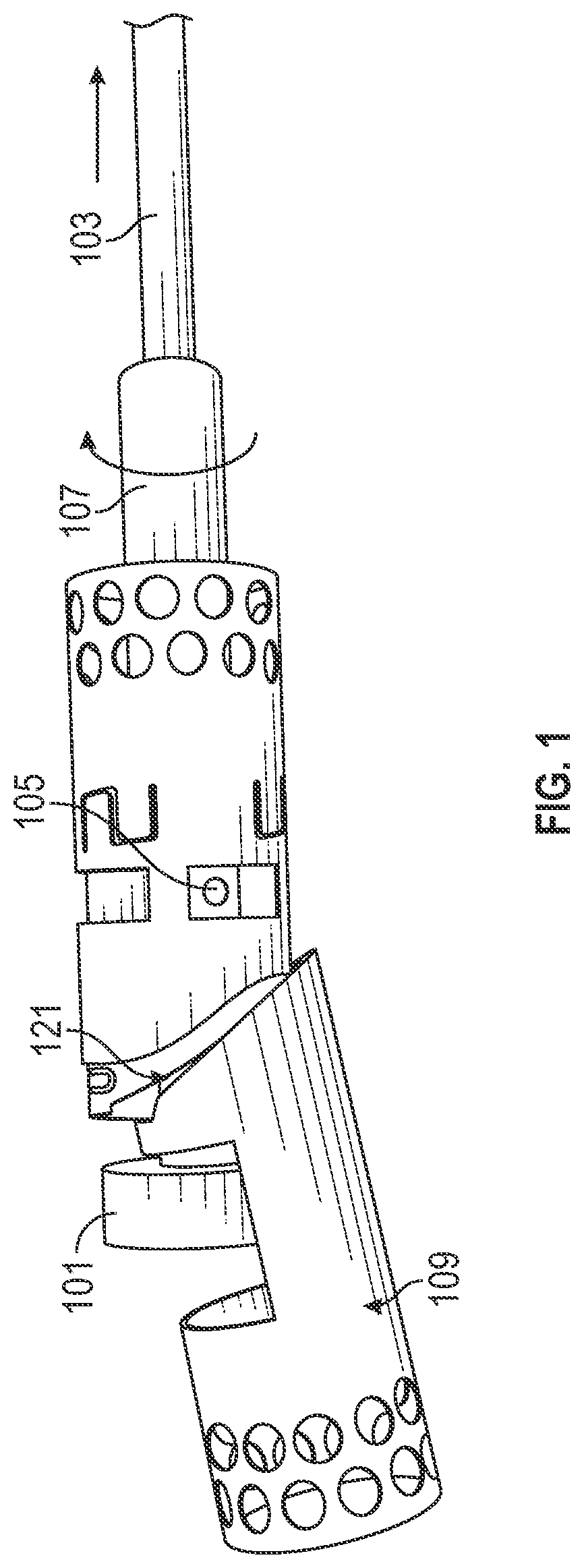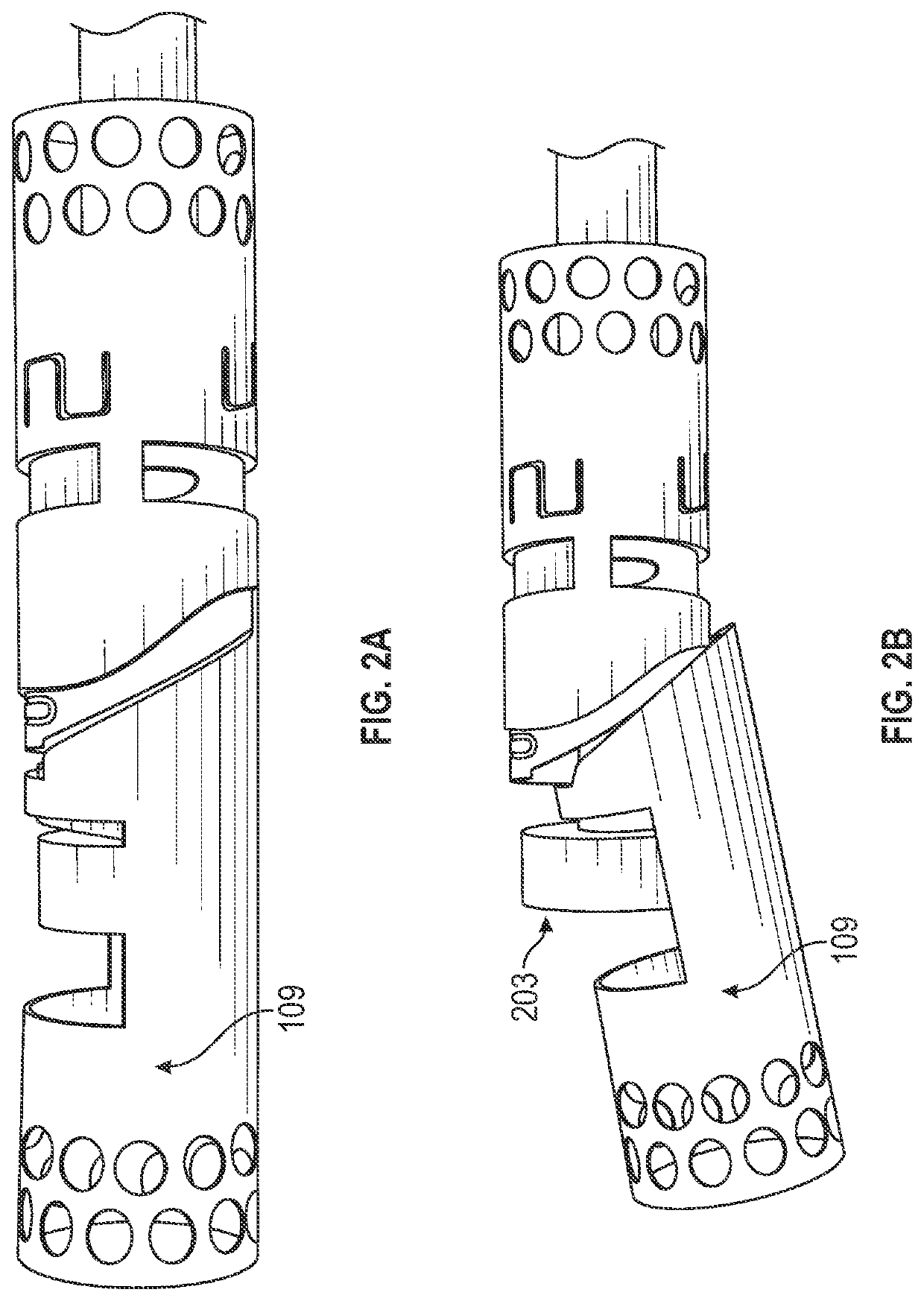Atherectomy catheter
a catheter and atherectomy technology, applied in the field of atherectomy catheters, can solve the problems of affecting the blood circulation of the arms, legs, stomach and kidneys, and affecting the function of the heart, and reducing brain and heart function, and causing brain damage and heart failur
- Summary
- Abstract
- Description
- Claims
- Application Information
AI Technical Summary
Benefits of technology
Problems solved by technology
Method used
Image
Examples
examples
[0152]FIGS. 3A and 3B show one variation of an atherectomy catheter that includes both a rotating cutter and a rotating imaging sensor. In this variation the cutter and imaging sensor may be rotated separately, and the distal tip region may be displaced to expose the cutting edge of the cutter, allowing material to be removed. OCT images may be collected continuously (in a 360 degree view) before, during, or after cutting. In this variation the cutter is positioned distally to the imaging sensor. The distal tip region may be displaced by applying pulling (or in some variations pushing) force to the drive shaft of the cutter, which displaces the distal tip region. Moving the drive shaft laterally (e.g., proximally or distally) to displace the distal tip does not otherwise effect the operation of the cutter, which may continue to rotate. This may allow the distal tip region to help control the thickness of slices cut from the tissue by controlling the amount that the cutting edge is e...
PUM
 Login to View More
Login to View More Abstract
Description
Claims
Application Information
 Login to View More
Login to View More - R&D
- Intellectual Property
- Life Sciences
- Materials
- Tech Scout
- Unparalleled Data Quality
- Higher Quality Content
- 60% Fewer Hallucinations
Browse by: Latest US Patents, China's latest patents, Technical Efficacy Thesaurus, Application Domain, Technology Topic, Popular Technical Reports.
© 2025 PatSnap. All rights reserved.Legal|Privacy policy|Modern Slavery Act Transparency Statement|Sitemap|About US| Contact US: help@patsnap.com



